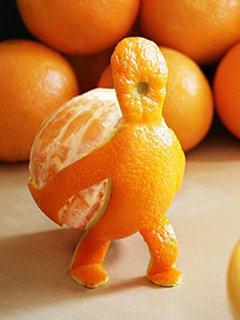Characteristics
The leopard's skin colour varies between individuals from pale yellowish to dark golden with dark spots grouped in rosettes. Its belly is whitish and its ringed tail shorter than its body. Its pupils are round.[16] Leopards living in arid regions are pale cream, yellowish to ochraceous and rufous in colour; those living in forests and mountains are much darker and deep golden. Spots fade toward the white underbelly and the insides and lower parts of the legs.[17] Rosettes are circular in East African leopard populations, and tend to be squarish in Southern African and larger in Asian leopard populations. The fur tends to be grayish in colder climates, and dark golden in rain forest habitats.[9] The pattern of the rosettes is unique in each individual.[18][19]
Its fur is generally soft and thick, notably softer on the belly than on the back.[20] It tends to grow longer in colder climates.[21] The guard hairs protecting the basal hairs are short, 3–4 mm (0.12–0.16 in) in face and head, and increase in length toward the flanks and the belly to about 25–30 mm (0.98–1.18 in). Juveniles have woolly fur, and appear dark due to the densely arranged spots.[22][18] Its white-tipped tail is about 60–100 cm (24–39 in) long, white underneath and with spots that form incomplete bands toward the tail's end.[23]
Size and weight
The leopard's rosettes differ from those of the jaguar, which are darker and with smaller spots inside. The cheetah has small round spots without any rosettes.[16]
The leopard is sexually dimorphic, males are larger and heavier than females.[23] It is muscular, with relatively short limbs and a broad head. Males stand 60–70 cm (24–28 in) at the shoulder, while females are 57–64 cm (22–25 in) tall. The head-and-body length ranges between 90 and 196 cm (35 and 77 in) with a 66 to 102 cm (26 to 40 in) long tail. Sizes vary geographically.[21] Males weigh 37–90 kg (82–198 lb), and females 28–60 kg (62–132 lb).[22][25]
Usually, leopards are larger in areas where they are at the top of the food chain, without competitive restriction from larger predators such as the lion and tiger.[26] Some leopards in North Africa allegedly were as large as Barbary lions. In 1913, an Algerian newspaper reported a leopard killed that allegedly measured about 275 cm (108 in) in total length.[27] To compare, male lions measure 266–311 cm (8 ft 9 in–10 ft 2 in) from head to end of tail.[28]
The maximum weight of a wild leopard is about 96 kg (212 lb), recorded in Southern Africa. It measured 262 cm (8 ft 7 in).[29][30] An Indian leopard killed in Himachal Pradesh in 2016 measured 261 cm (103 in) with an estimated weight of 78.5 kg (173 lb) was perhaps the largest known wild leopard.[31][32]








0 Yorumlar